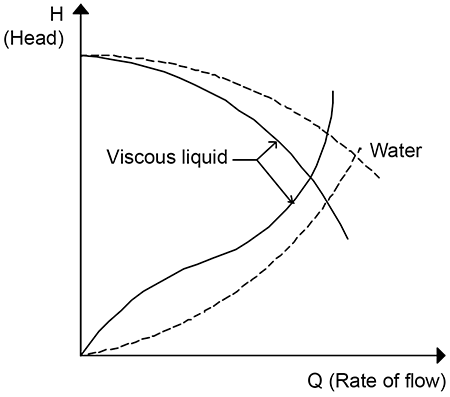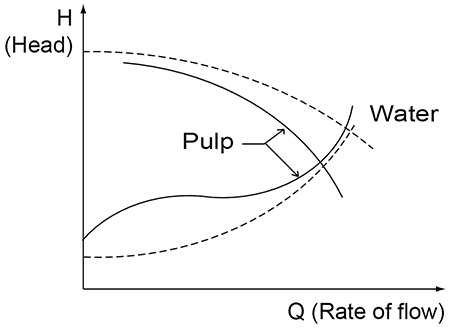
Will a system curve look the same for pulp or viscous applications as it does for water?
04/27/2022
Will a system curve look the same for pulp or viscous applications as it does for water?
Pump and system curves are often represented based on water-like liquids. The curves have different shapes for viscous and non-Newtonian liquids, as illustrated in Image 4. In these images, the pump head decreases as a function of increased flow and the system curve increases as a function of flow. Their intersection point is the operating flow and head.

The pumping of a pulp suspension is shown in Image 5 as an example of system curves for non-Newtonian liquids. The liquid characteristics of a pulp suspension are reflected in the shape of the system curve. The pump curve also changes to some extent in comparison to water. Much of this change is caused by the higher air content in the pulp.

Read more HI Pump FAQs here.

